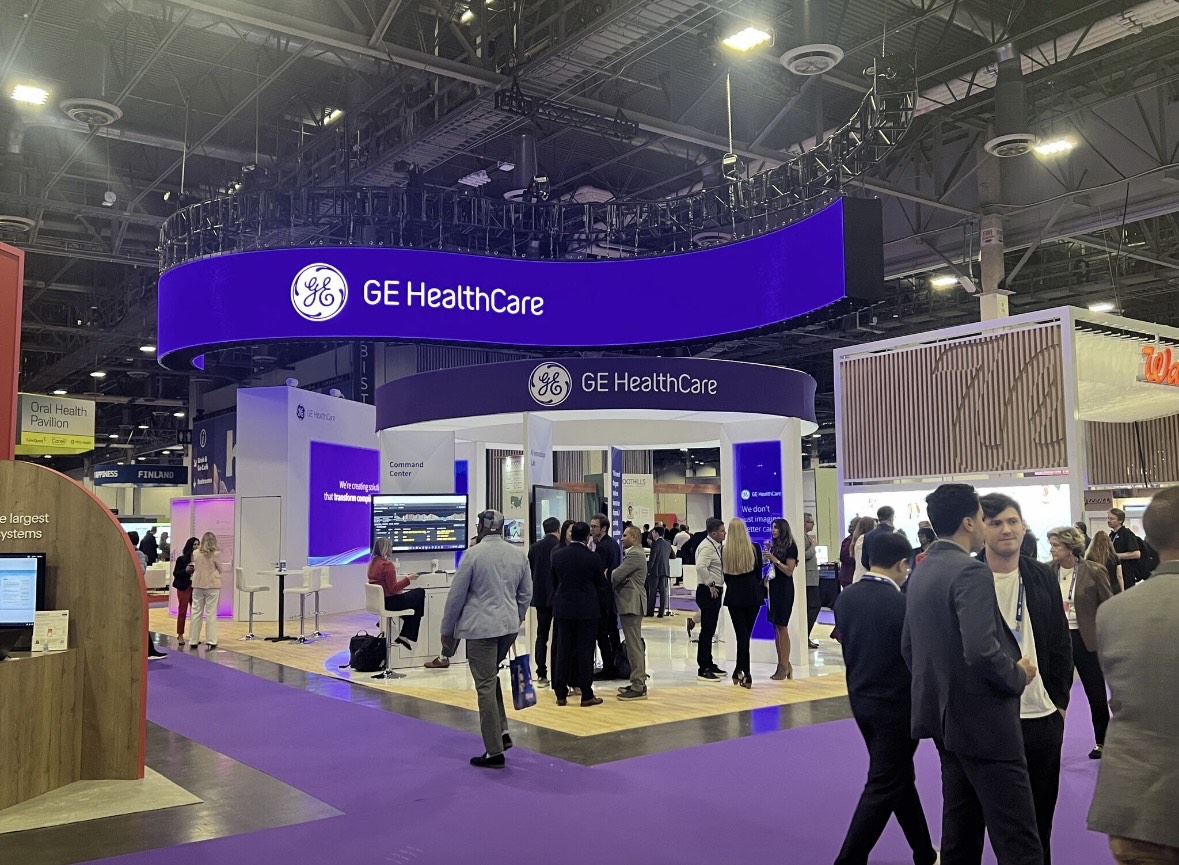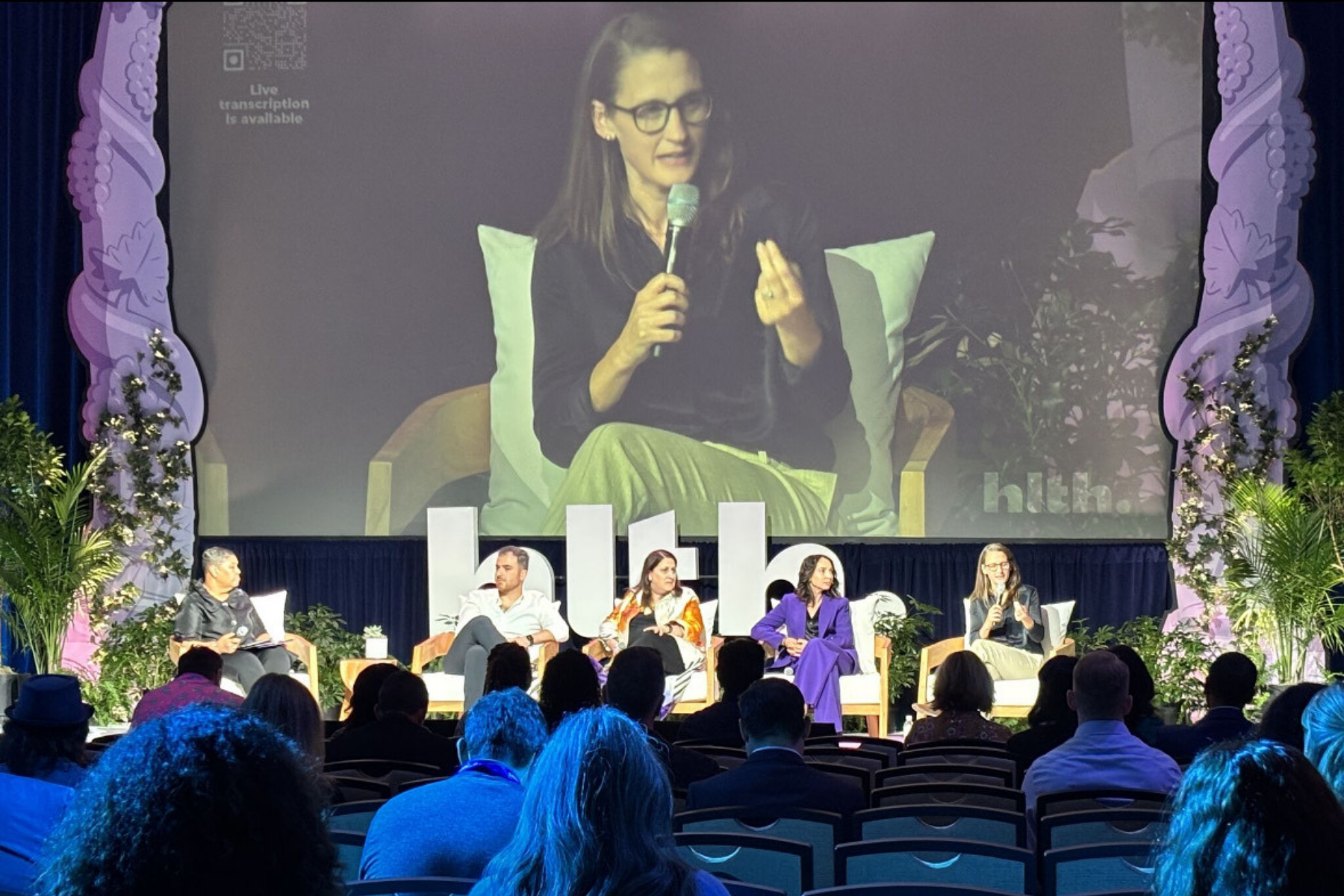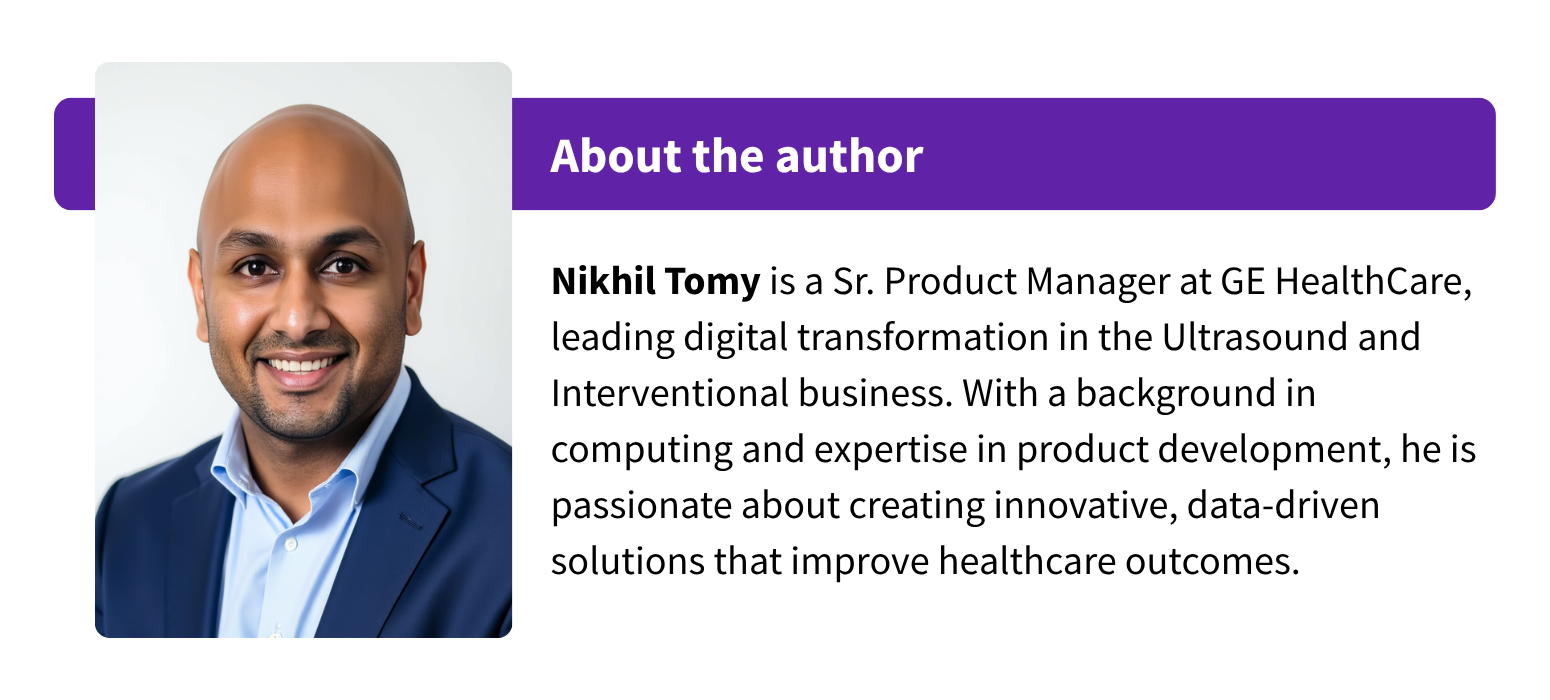At HLTH 2025, innovation didn’t feel like something on the horizon. It felt like something already taking shape. As a technologist, I came to the conference eager to see what’s next for digital health. As a listener, I came to understand what’s working now—and what still isn’t.
Across sessions and conversations, one theme stood out: the future of healthcare will be defined not by more technology, but by smarter technology. Technology that is integrated, invisible, and meaningful. The innovations that matter most are those that expand access, reduce friction, and empower clinicians to deliver better care.
That idea deeply resonates with how we at GE HealthCare are evolving ultrasound through the VerisoundTM connected digital ecosystem. Our focus is not on technology for its own sake, but on delivering optimal clinical and operational workflow, and providing unrelenting support so clinicians can focus on patient care.
Bringing care closer to patients
A major thread at HLTH 2025 was decentralization, or how diagnostics and therapeutics are moving closer to where people live and receive care. From home-based monitoring to digital triage and remote imaging, healthcare is becoming more distributed and personalized.
Point-of-care ultrasound (POCUS) embodies this shift. Once limited to imaging specialists, ultrasound now supports generalists, nurses, and emergency clinicians in answering targeted questions at the bedside. It’s enabling faster, more confident care—without waiting for radiology scheduling.
We’re seeing this evolution across disciplines. Recent examples include emergency physicians performing ultrasound-guided nerve blocks for more accurate delivery of local anesthetic. When effective, patients experience significant pain relief without systemic opioids. Gastric POCUS is being used to assess gastric contents, critical for patients on GLP-1 medications, which slow stomach emptying. These practical examples underscore how digital ultrasound tools are aligning with critical issues and trends.
Ensuring innovation reaches everyone
Another aspect of the access conversation that echoed powerfully through HLTH was that innovation that only benefits the privileged few isn’t innovation—it’s inequity.
In both developed and emerging regions, geography still too often determines survival. The World Health Organization estimates that 4.5 billion people have little or no access to quality care.1 In the United States, more than half of rural counties lack obstetric services;2 globally, geographic isolation, poverty, and shortage of equipment and trained personnel can all factor into lack of access to prenatal ultrasound scans.
My colleague Karley Yoder, CEO, Comprehensive Care Ultrasound for GE HealthCare, addressed this reality on a panel called, “Not Hard to Reach, Just Easy to Ignore,” which explored how healthcare leaders can better serve rural and under-resourced communities. The conversation centered on designing technology that fits real-world workflow. Solutions must empower rather than overwhelm clinicians in under-resourced settings.
Karley Yoder, CEO, Comprehensive Care Ultrasound for GE HealthCare, speaks during a panel at HLTH 2025
Three principles stood out:
- shorten the distance by bringing care closer to patients and bridging gaps between teams;
- embrace simplicity over complexity to streamline workflows and make healthcare delivery intuitive;
- scale equity to ensure solutions are inclusive, sustainable, and reproducible across diverse communities.
These pillars serve as guideposts for anyone building the future of accessible care.
The tools in the Verisound portfolio are helping bridge these divides. Portable devices like Vscan AirTM put imaging directly into the hands of clinicians and midwives, wherever care is delivered. In several Ethiopian regions, midwives now use these handheld ultrasound systems on women who previously could not or would not travel for an exam, providing a gateway to safer pregnancies and healthier outcomes in this remote region.
Verisound Collab* is a tele-ultrasound solution that extends system usage expertise by virtually embedding specialists from anywhere in the world alongside local providers. As an example, rural imaging clinics could have an urban breast imaging specialist observe and advise during exams on how to get the most out of the features within their ultrasound equipment.
And through a $44 million grant from the Bill & Melinda Gates Foundation, GE HealthCare is developing AI-assisted ultrasound technology aimed at improving obstetric outcomes in low- and middle-income countries—putting advanced imaging capabilities in the hands of frontline health workers.
Early detection and proactive care
Another recurring HLTH message was the shift from reactive treatment to proactive prevention. Across panels, there was a shared conviction that earlier detection, supported by smarter diagnostics, can reshape population health.
That aligns closely with GE HealthCare’s ultrasound AI initiatives. Caption AITM helps clinicians capture high-quality cardiac images, potentially allowing them to detect early signs of heart disease, even outside specialty echo labs. Cardiovascular disease remains the leading global cause of death,3 yet over 80 percent of these deaths are considered preventable.4 Expanding access to AI-guided rapid cardiac image acquisition may enable earlier identification of structural changes—helping clinicians intervene early.
The same principle guides our AI work in prenatal and cardiovascular screening globally, ensuring more clinicians can provide timely, informed care that changes outcomes.
Workflow is the next frontier for AI
AI was, of course, another major HLTH headline. This year, the conversation was a little different, changing from algorithms to application, from data generation to data connection. I left thinking the next leap in healthcare won’t come from adding more tools. It will come from making the right tools work together.
I was particularly intrigued by the growing excitement around the adoption of AI to improve clinical workflows, allowing clinicians to focus more on patient care rather than administrative burdens. However, as Dr. Morgan Cheatham of Breyer Capital emphasized during the 'Physicians of the Future' panel, the ultimate challenge lies in aligning incentive structures and reimbursement frameworks to support this transformation.
From a technology perspective, I think AI’s potential lies not in producing more insights, but in placing those insights exactly where clinicians need them—within their existing workflows. The best technology fades into the background, guiding decisions without adding clicks or complexity.
That principle drives Verisound connected ecosystem. When ultrasound data, AI insights, and patient information flow directly into the EMR, clinicians spend less time navigating systems and more time interpreting what matters. Measurements, annotations, and findings populate reports automatically. Structured data fields update across systems in real time—reducing duplication, manual entry, and error.
This kind of invisible integration gives time back to clinicians and improves the fidelity of care data across the enterprise. When AI, automation, and interoperability work together, technology stops feeling like technology—it becomes a natural extension of how clinicians think and work.
Seeing innovation through a human lens
For me, HLTH 2025 reinforced that the next era of healthcare will be defined not by technology itself, but by how effortlessly it helps people care for people. The energy on the show floor was electric, with emerging companies showcasing bold innovations aimed at reshaping care delivery, data interoperability, and patient engagement. For startups ready to scale, HLTH is more than a conference, it's a launchpad.
As I walked through the exhibits and attended panels, what stood out most wasn’t the speed of progress but rather the purpose behind it. The innovations that endure are the ones that make someone’s day easier, a diagnosis faster, a decision clearer. They’re the quiet connectors that bring teams together and put patients at the center of every workflow.
That’s what we’re building toward at GE HealthCare. Verisound isn’t just a product or a platform. It’s part of a larger shift toward care that feels more human, more connected, and more immediate.
As someone who spends my days thinking about digital transformation, HLTH was a reminder that progress isn’t about adding more screens or features. It’s about removing the distance between data and insight, between clinician and patient, between innovation and impact.
That’s the future I saw at HLTH 2025. And it’s the one we’re working toward every day.
REFERENCES:
1. "Billions left behind on the path to universal health coverage," World Health Organization, last modified September 18, 2023, https://www.who.int/news/item/18-09-2023-billions-left-behind-on-the-path-to-universal-health-coverage
2. "Maternal Health: Availability of Hospital-Based Obstetric Care in Rural Areas," U.S. Government Accountability Office, last modified October 19, 2022, https://www.gao.gov/products/gao-23-105515
3. "Cardiovascular diseases," World Health Organization, last accessed October 23, 2025, https://www.who.int/health-topics/cardiovascular-diseases
4. "Each year, cardiovascular disease (CVD) claims over 20.5 million lives," World Heart Federation, last accessed October 23, 2025, https://world-heart-federation.org/world-heart-day/
Caption AI, Verisound, and Vscan are trademarks of GE HealthCare.
Product and features may not be available in all countries and regions. Full product technical specification is available upon request. Contact a GE HealthCare representative for more information.
*Verisound Collab is not for diagnostic use
©2025 GE HealthCare. GE is a trademark of General Electric Company used under trademark license.
JB35569XX



